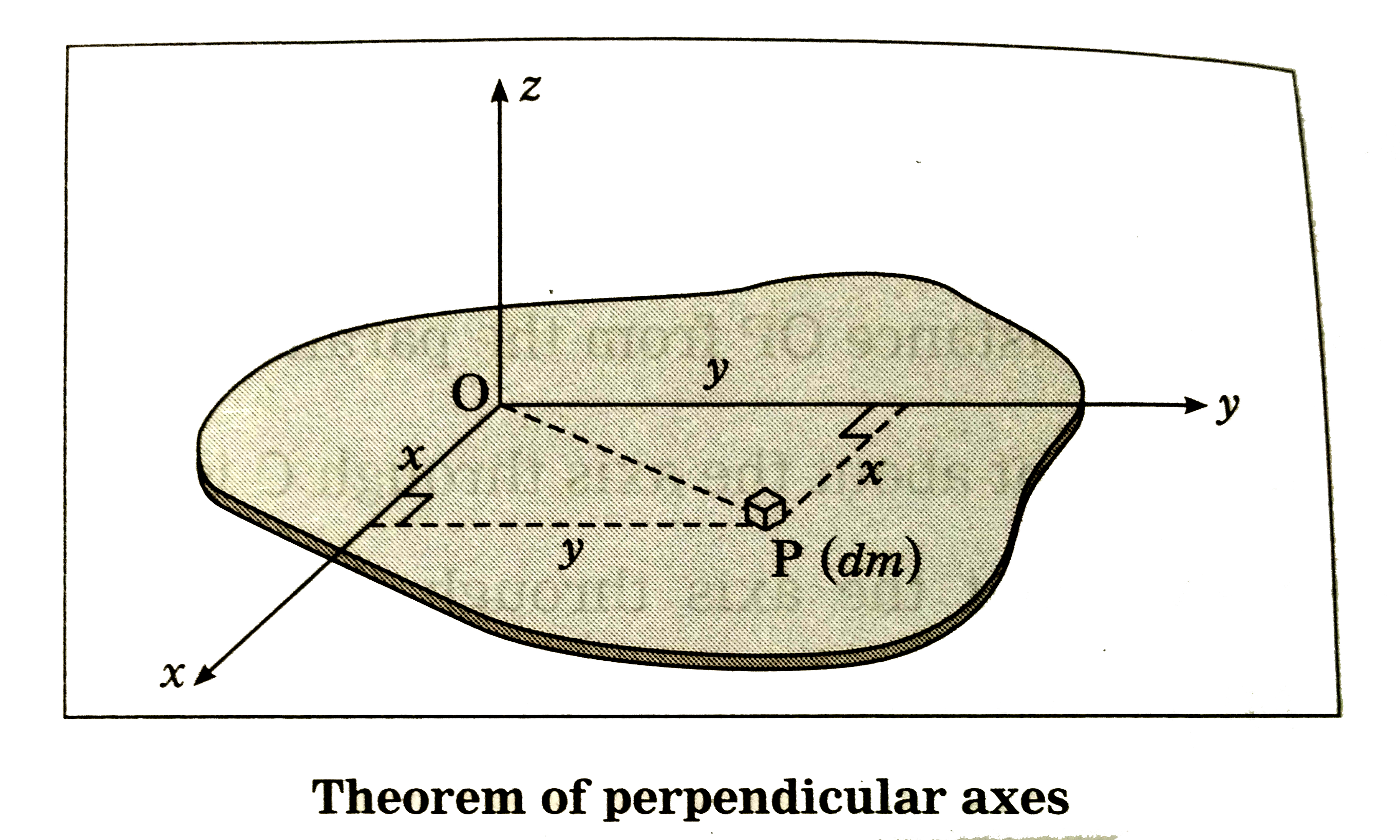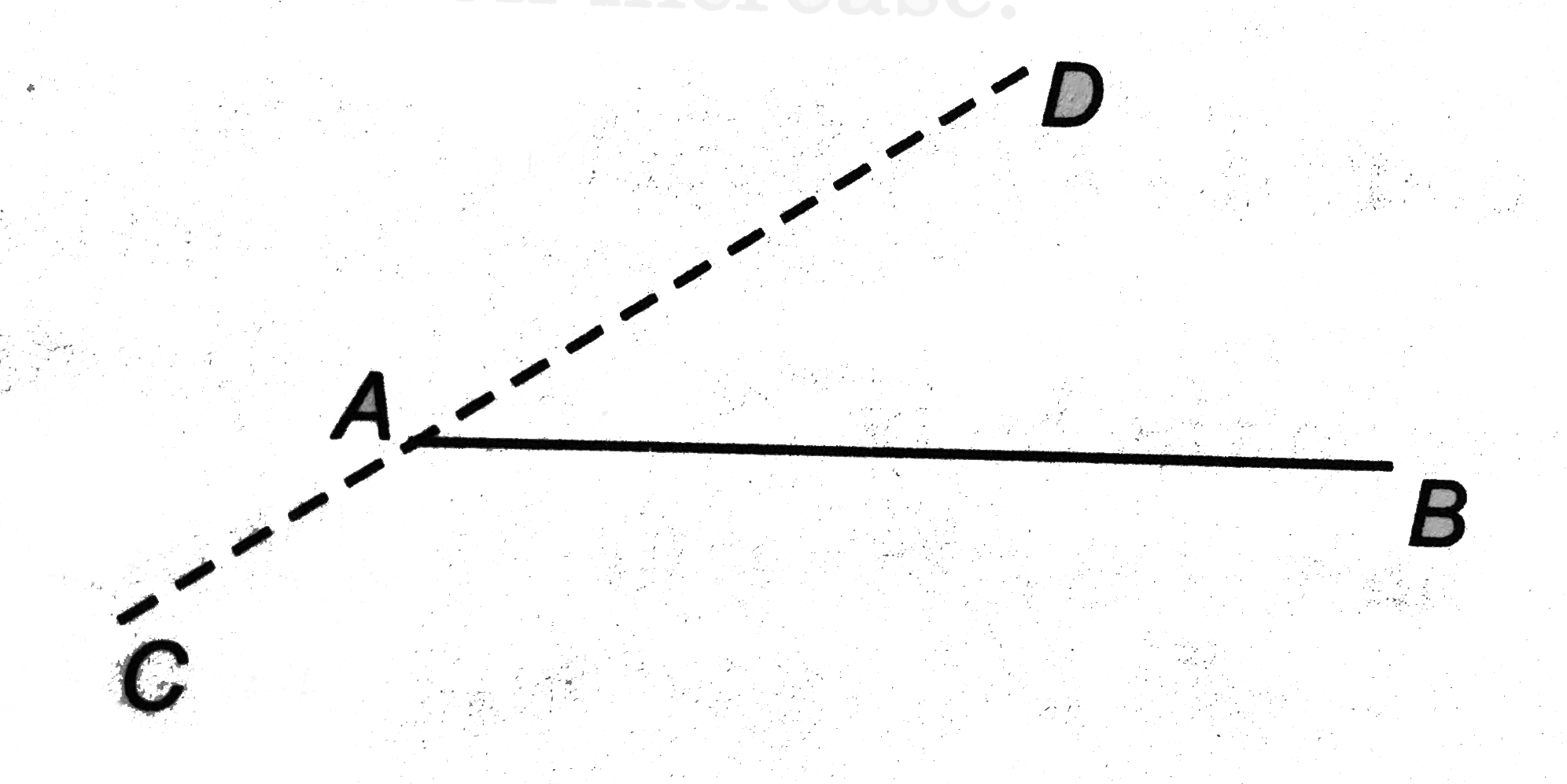State and prove theorem of perpendicular axes.
Video Solution
Text Solution
Theorem of perpendicular axes : The moment of inertia of a plane lamina about an axis perpendicular to its plance is equal to the sum of its moments of inertia about two mutually perpendicular axes in its plane and through the point of intersection of the perpendicular axis and the lamina.

Proof : Let Ox and Oy be two perpendicular axes in the plance of the lamina and Oz, the axis perpendicular to its plane. If Ix,Iy and Iz are the moments of inertia of the lamina about the x,y, and z axes respectively, then, the theorem of perpendicular axes can be stated mathematically as
Iz=Ix+Iy.
Consider an infinitesimal volume element of mass dm of the lamina at the point P(x,y). The MI of the lamina about the z-axis is Iz=∫OP2 dm. The element is at perpendicular distance y and x from the x- and y-axes respectively. Hence, the moments of inertia of the lamina about the x-and y-axes are respectively Ix=∫y2dmand Iy=∫x2dm.
Since OP2=y2+x2,
Iz=∫OP2dm=∫(y2+x2)dm
=∫y2dm+∫x2dm
∴Iz=Ix+Iy
This proves the theorem of perpendicular axes.
|
Updated on:21/07/2023
Topper's Solved these Questions
- BOOK - NAVNEET PUBLICATION - MAHARASHTRA BOARDCHAPTER - DERIVATIONS-IEXERCISE - Oscillations5videos
DERIVATIONS-I
- BOOK - NAVNEET PUBLICATION - MAHARASHTRA BOARDCHAPTER - DERIVATIONS-IEXERCISE - Elasticity2videos
DERIVATIONS-I
- BOOK - NAVNEET PUBLICATION - MAHARASHTRA BOARDCHAPTER - DERIVATIONS-IEXERCISE - Gravitation7videos
DERIVATIONS-I
- BOOK - NAVNEET PUBLICATION - MAHARASHTRA BOARDCHAPTER - DEFINITIONSEXERCISE - COMMUNICATION SYSTEMS3videos
DEFINITIONS
- BOOK - NAVNEET PUBLICATION - MAHARASHTRA BOARDCHAPTER - DERIVATIONS-IIEXERCISE - Assignments9videos
DERIVATIONS-II
Similar Questions
Knowledge Check
- Question 1 - Select One
By the theorem of perpendicular axes, if a body be in X-Z-plane then :-
AIX−IY=IZBIZ+IY=IXCIZ+Ix=IYDIy+IZ=IX - Question 2 - Select One

Assertion: There is a thin rod AB and a dotted line CD. All the axes we are talking about are perpendicular to plane . As we take different axes moving from A to D, moment of inertia of the rod may first decrease then increase.
Reason: Theorem of perpendicular axis cannot be applied here.AIf both Assertion and Reason are true and the Reason is correct explanation of the Assertion.BIf both Assertion and Reason are true but Reason is not the correct explanation of Assertion.CIf assertion is true, but the reaction is false.DIf assertion is false but the reason is true. - Question 3 - Select One
By the theorem of perpendicular axes, if a body be in X-Z-plane then :-
AIx−Iy=IzBIx+Iz=IyCIx+Iy=IzDIy+Iz=Ix
State and prove theorem of parallel axes.
View SolutionState and prove theorem of parallel axes.
View SolutionState and prove Baye's theorem.
View SolutionState theorem of parallel axes and therom of perpendi cular axes about moment of inertia.
View SolutionBy the theorem of parallel axes:
View Solution

